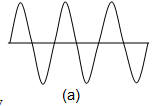
CHARACTERISTICS OF SOUND
Sound of Class 9
PITCH:
Pitch is the sensation (brain interpretation) of the frequency of an emitted sound .
Faster the vibration of the source, higher is the frequency and higher is the pitch. Similarly low pitch sound corresponds to low frequency.
A high pitch sound is called a shrill sound (e.g. humming of a bee, sound of guitar etc.)
A low pitch sound is called a horse sound (e.g. roar of a lion, car horn etc.)
Loudness or softness :
Loudness or softness of sound wave is the sensations that depends upon is amplitude . When we strike a table to with more force, it vibrates and produces loud sound waves which have more amplitude. When struck with smaller force, vibrating table top produces soft sound waves which have less amplitude. A loud sound wave carries more energy and can be heard at large distance. Reduction in amplitude at large distance, makes the sound soft.


Timbre or quality :
Quality or timbre is characteristic of a sound which enables us to distinguish between the sound of same loudness and pitch. This characteristic of sound helps up to recognise our friend from his voice without seeing him. The quality of two sounds of same loudness and pitch produced by two different sources are distinguishable because of different wave form produced by them.
e.g. The violin and flute (Bansuri)
Intensity : Intensity of a sound is defined at the sound energy transferred per unit area placed perpendicular to the direction of the propagation of sound.
That is, intensity of sound =

Intensity of a sound is an objective physical quantity. It does not depend on the response of our ears.
The S.I. unit of intensity of sound is joule s -1 m -2 watt m -2 ( Js -1 = 1W)
Difference between loudness and intensity of sound:
|
S.No. |
Loudness |
Intensity of Sound |
|
1 |
Loudness is a subjective quantity. If depends upon the sensitivity of the human ear. A sound may be loud for a person but the same sound may be feeble for another who is hard of hearing. |
Intensity of sound is an objective physical quantity. It does not depend on the sensitivity of a human ear. |
|
2 |
Loudness cannot be measured as a physical quantity because it is just sensation which can be felt only. |
Intensity of a sound can be measured as a physical quantity. |
SOUND NEEDS A MEDIUM TO TRAVEL :
The origin of sound is always some vibrating body. In some cases the vibrations of the source may be very small or very large that it may not be possible to detect them. This type of vibrations is produced by tuning fork, drum, bell, the string of a guitar etc. Human voice originates from the vibrations of the vocal chords and the sound from the musical instruments is due to the vibrations of the air columns. Sound travels in the form of longitudinal wave and it requires a material medium for its propagation
MUSIC AND NOISE:
We can categorize sounds into two parts :
Musical sound or music: These sounds have a pleasant effect on the listener. Sounds produced by a tuning fork, musical instruments, singing of sounds, etc are few examples of musical sound. A musical sound consists of a series of sound impulses following each other at regular intervals of time without sudden changes in amplitude (i.e., loudness). Such sounds are usually of high frequency.

Noise: These sounds have an unpleasant (disagreeable or boring) effect on the listener. Rustling of leaves, murmuring of students, etc are some examples of noise. A noise consists of a series of sound impulses following each other at regular intervals of time and there are sudden changes in amplitude (i.e. loudness). Such sounds are of low frequency.

Both musical sound and noise are based on psychological response of the ear and brain to various types of sound. There is no clear line of demarcation between them on the basis of sensation these produce on the ear of the listener.
Differences between musical sound and noise
|
S. No. |
Musical Sound |
Noise |
|
1. |
It has a pleasant effect on the ear. |
1. It has an unpleasant effect on the ear. |
|
2. |
It consists of a series of sound impulses which follow one another regularly. |
2. The sound impulses do not follow one another regularly. |
|
3. |
The frequency of musical sound is high. |
3. The frequency of a noise is low. |
|
4. |
There are no sudden changes in amplitude (loudness) of the waves constituting a musical sound. |
4. There are usually sudden changes in amplitude (loudness) of the waves forming a noise. |






